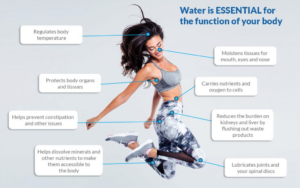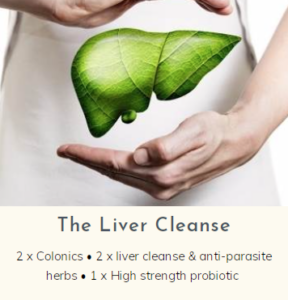Let’s continue onto the 8th part of our ‘My GI Tract’ series, and how the large intestine aids our digestion.
Here’s a quick recap. The digestive process begins in the mouth. It receives the food and breaks it up into small, easy-to-swallow pieces. Enzymes from the saliva break down any starch and the food passes into a long tube called the oesophagus. It carries the food bolus along its length, and contracts (peristalsis) to move food down towards the stomach. The enzymes and acids in the stomach continue the process of breaking down food, before they are released into the small intestine. The small intestine receives food from the stomach and continues to break down the food while absorbing the majority of its nutrients. In the upper section of your small intestine (duodenum), digestion continues as chyme from the stomach mixes with a variety of digestive juices from your pancreas, liver and gallbladder. At end of the journey through the small intestine, most nutrients from digested food have been absorbed. In the large intestine, undigested material, excess fluids, and mucus all combine to form stool.
The lower GI (gastrointestinal) tract
This is made up of the colon, rectum and anus. The role of the lower GI tract is to solidify the waste product (by absorbing water), store the waste product until it can be eliminated (a bowel movement), and help with the elimination process.
The Large Intestine (Colon)
At end of the journey through the small intestine, most nutrients from digested food have been absorbed. But not everything you eat is an absorbable nutrient. So, what happens to the parts of your food that your body doesn’t need? In the large intestine, undigested material, excess fluids, and mucus all combine to form stool.
The colon is approximately 6-foot long muscular tube that connects the small intestine to the rectum, and is made up of the following:
- cecum
- ascending (right) colon
- transverse (across) colon
- descending (left) colon
- sigmoid colon (connects to the rectum)
Let’s journey through it!
Waste left over from the digestive process, is passed through the colon by means of peristalsis. It normally takes around 36 hours for stool to get through the colon. The good gut bacteria break down the remaining carbohydrates to produce key vitamins (B and K) that are absorbed through the mucosa. This is why it takes longer in comparison to the small intestine.
The cecum is the reservoir where food from the small intestine arrives in the large intestine. When the cecum is full, it triggers the muscle movements of the colon to begin. Food travels to the ascending colon, and upward and sideways across the transverse colon. Along these, any remaining water and electrolytes are absorbed so that the food waste that arrives in the descending colon is mostly solid. The colon secretes mucus to bind and lubricate the food waste to help it pass through smoothly as it is dehydrated. This soft mass called stool (food debris and bacteria) is then stored in the sigmoid colon (S-shaped) until it becomes full. It is then squeezed (through periodic muscle contractions) and emptied into a pouch called the rectum, to begin the process of elimination (a bowel movement).
Did you know? Stool can sit in the large intestine for up to 48 hours before it is expelled from the body.
Tune in next time, as we continue our journey through the rectum and learn the process of elimination takes place.
To find out about how to keep your digestive system working effectively, and to book your appointment, get in touch.
Email us info@claritywellbeing.co.uk or call us on 07782 200 112.



